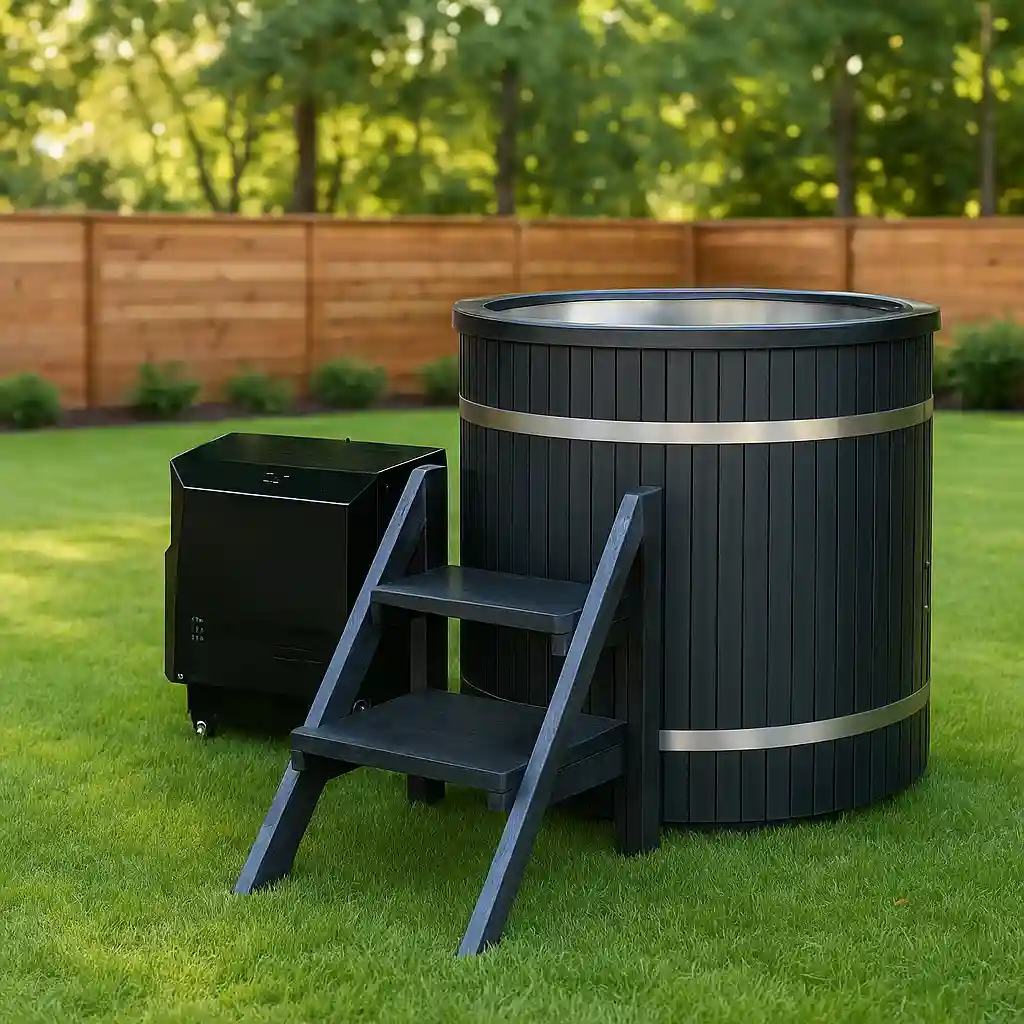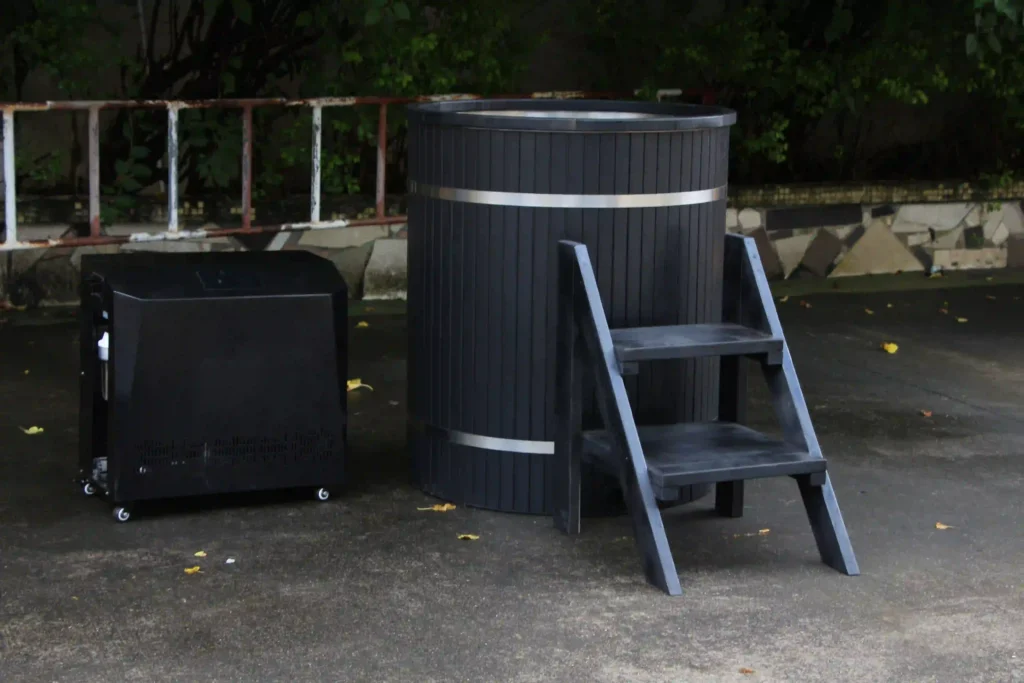🧊 Introduction: It’s Not Just Cold—It Needs to Be Clean
A cold plunge chiller and filter system offers enormous recovery and wellness benefits—but only if it’s maintained correctly. Most users assume the water stays clean simply because it’s cold. The truth is: the biggest source of contamination isn’t the water—it’s you.
Every time someone enters the tub, they introduce invisible pollutants: hair, sweat, body oils, and skin debris. Without proper filtration, these impurities circulate through the system, creating health risks and potentially damaging the equipment.
🧼 Where Contamination Really Comes From
Let’s be clear: cold water does not purify itself.
Here’s what enters the water with every use:
Body oils and sebum, which form a film on the water surface
Dead skin cells and microscopic debris that bacteria feed on
Hair, which floats freely and can clog filters and pumps
Residue from lotions, deodorants, and detergents
This contamination accumulates quickly, especially in shared-use settings like spas, gyms, and clinics. If not filtered and cleaned, the water becomes:
Cloudy
Smelly
Biologically active (a breeding ground for bacteria and mold)

Bacteria Can Survive in Cold Water
Research shows that bacteria such as Pseudomonas aeruginosa and Legionella pneumophila can survive in cold plunge systems (CDC). That means temperature alone isn’t enough—without filtration and disinfection, the water becomes a risk.
⚠️ What Happens Without a Filter?
Filtration is not an optional add-on—it is the frontline defense for both your health and your equipment.
Without an effective filter:
Hair and debris enter the pump → causes impeller blockage and potential motor failure
Biofilm forms in tubing and chiller coils, reducing cooling efficiency
Water becomes unsafe, leading to skin irritation, folliculitis, and even infection risk
💡 Cold water slows microbial growth—but if it’s not filtered, it becomes a dangerous false sense of cleanliness.
🔧 The Role of the Filter: System Protection + User Safety
Modern cold plunge chillers like the CHU-10-RV and CHM-10-RV include dedicated filtration systems that serve two critical functions:
Protecting the machine:
Filters remove particles that would otherwise damage pumps, block internal flow, or degrade system performance.Protecting the user:
Filters capture biological contaminants before they recirculate through the water—and through your skin.
Filter Types:
| Filter Type | Function | Lifespan |
|---|---|---|
| PP Cotton Cartridge | Blocks large debris (hair, dust) | 2–4 weeks (washable once) |
| Paper Cartridge | Finer filtration for oils/organics | 1–3 weeks (replace only) |
🧽 Filter Maintenance: What You Must Do
Even the best system will fail without maintenance.
Regular filter care includes:
Weekly inspection for discoloration, odor, or low flow
Rinsing washable filters (PP cotton) with fresh water
Replacing saturated filters (especially paper types)
Cleaning the filter housing with food-grade sanitizer every 2–4 weeks
🛠 Recommended tools:
Nitrile gloves
Spare filters
Bucket with diluted hydrogen peroxide
Sponge or filter brush
Don’t Skip the Housing
Clean filter housing interior using mild disinfectant and a soft sponge. For safe and effective sanitation, refer to the WHO Guidelines on Water, Sanitation, and Health.
💧 What About the Chiller? Isn’t That Enough?
No. The chiller only cools—it does not filter or sanitize the water.
Unless your system includes built-in ozone or UV (like CHU-10-RV), you must:
Manually sanitize tubing and tanks every 4–8 weeks
Flush standing water if the system hasn’t been used for several days
Ensure active water circulation daily to prevent stagnation
Ozone Systems Help—But Don’t Replace Filters
If your unit includes ozone or UV disinfection (as with CHU-10-RV), verify its function. Ozone is proven to eliminate pathogens in recirculating water systems (EPA).
📊 Maintenance Schedule (Realistic, Tested)
| Usage Frequency | Clean Filter | Replace Filter | Sanitize Tubing/System |
|---|---|---|---|
| 1–2x/week | Every 2 weeks | Monthly | Every 2 months |
| Daily use | Weekly | Bi-weekly | Monthly |
| Commercial use | Every 3 days | Weekly | Bi-weekly |
✅ Best Practices from Field Use
Keep at least 2–3 filters in stock to avoid downtime
Never operate a chiller without a filter installed
If water looks clear but smells off, replace the filter immediately
For clinics or gyms: post a sign reminding users to rinse before plunging
Use ozone-compatible disinfectants to sanitize without damaging equipment
🧊 Recommended Systems That Support Easy Filtration
🔹 CHU-10-RV
Freezes down to 0°C
Integrated filter system + ozone sanitation
WiFi control and external pump for easy flow check
Ideal for high-use or professional-grade applications
🔸 CHM-10-RV
Compact 1HP system
Same 4-in-1 design: cooling, pump, filter, ozone
Simple filter replacement system, great for home users
🛒 Get Replacement Filters to keep your system running smoothly.
🏁 Conclusion: The Cold Isn’t the Problem—Contamination Is
A properly maintained cold plunge chiller and filter system is not just cold—it’s clean, safe, and reliable.
Without filtration, water becomes unsafe.
Without maintenance, your system becomes unstable.
Without hygiene, your recovery becomes a risk.
- Maintain your filters.
- Sanitize your tubing.
- Choose systems designed for real-world use.
🔗 Explore More Cold Therapy Solutions
🧊 CHU-10-RV Ice-Capable Chiller
Built for serious recovery with full hygiene support.
⚙️ CHM-10-RV Smart Filtration System
Home-use friendly, efficient, and clean.
🏠 Visit Our Official Website
Explore full cold plunge systems, filtration tools, and professional guidance.










